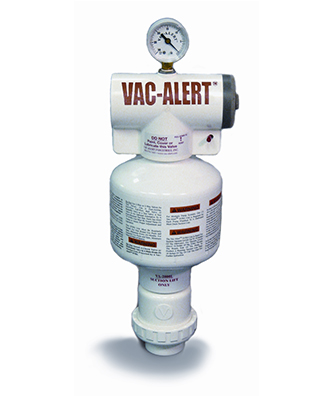- Jan 12, 2024
- 23
- Pool Size
- 20000
- Surface
- Plaster
- Chlorine
- Salt Water Generator
- SWG Type
- Pentair Intellichlor IC-40
I am concerned about pool safety, in particular drain safety. Is it possible to split the main drain (and add anti-entrapment covers) without resurfacing the pool?
Hi all, I just bought a house in Palm Springs, and I want to get the pool operational as soon as possible. It is currently being maintained by a pool service as a regular chlorine pool (non-salt) and looks clean, but it is not usable yet because it's very cold.
The pool is gunite with plaster and currently has a Pentair variable-speed pump and cartridge filter. There is no control system yet. It does not have a heater. It has one return jet in the shallow end. It has a single main drain (with whatever was "safe" in 1974) on the bottom of the deep end and a skimmer on the side of the deep end. The deep end is 8.5 ft to the water line. The pool is roughly a rectangle. The length is 36 ft and the width varies but is approx 14 ft on average.
We live in LA (2 hours away), so having a control system in place where I can remotely turn on the heat is essential to maximize pool usability for weekend trips.
The current surface is plaster with a number of chips out of it, but they don't seem very deep. This is part of the reason I'm planning to resurface next spring. We also have some other work that may impact the yard so I don't want to mess with the pool's concrete till that's all done.
My plan is to upgrade the pool in 2 phases:
Phase 1:
Add heater, add control system, add salt water cell, add mesh safety fence.
Phase 2:
Resurface w/ Pebble-something, add spa, add more return jets to main pool, possibly update deck.
My question is what does it take to split the drains? Is it possible to chip out just a small area of plaster, then make a hole in the concrete, then repair a small area of plaster around it? Or is this infeasible?
One alternative would be to block or not use the main drain, but I'm concerned that the chlorine and heat would not circulate very well.
I appreciate your thoughts and advice!
Hi all, I just bought a house in Palm Springs, and I want to get the pool operational as soon as possible. It is currently being maintained by a pool service as a regular chlorine pool (non-salt) and looks clean, but it is not usable yet because it's very cold.
The pool is gunite with plaster and currently has a Pentair variable-speed pump and cartridge filter. There is no control system yet. It does not have a heater. It has one return jet in the shallow end. It has a single main drain (with whatever was "safe" in 1974) on the bottom of the deep end and a skimmer on the side of the deep end. The deep end is 8.5 ft to the water line. The pool is roughly a rectangle. The length is 36 ft and the width varies but is approx 14 ft on average.
We live in LA (2 hours away), so having a control system in place where I can remotely turn on the heat is essential to maximize pool usability for weekend trips.
The current surface is plaster with a number of chips out of it, but they don't seem very deep. This is part of the reason I'm planning to resurface next spring. We also have some other work that may impact the yard so I don't want to mess with the pool's concrete till that's all done.
My plan is to upgrade the pool in 2 phases:
Phase 1:
Add heater, add control system, add salt water cell, add mesh safety fence.
Phase 2:
Resurface w/ Pebble-something, add spa, add more return jets to main pool, possibly update deck.
My question is what does it take to split the drains? Is it possible to chip out just a small area of plaster, then make a hole in the concrete, then repair a small area of plaster around it? Or is this infeasible?
One alternative would be to block or not use the main drain, but I'm concerned that the chlorine and heat would not circulate very well.
I appreciate your thoughts and advice!




